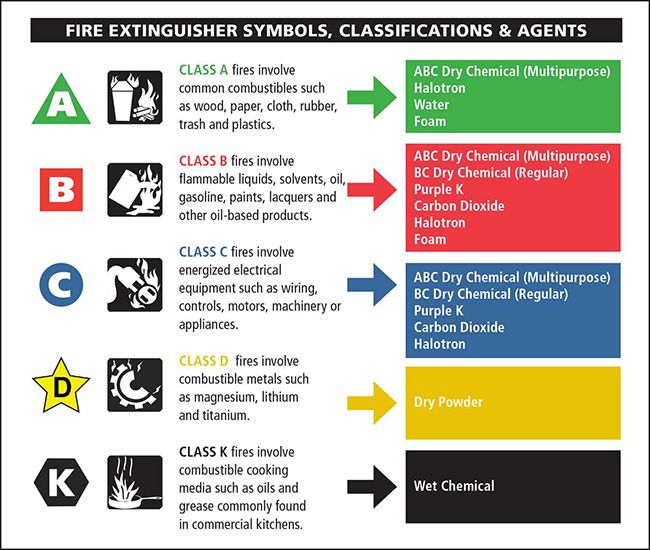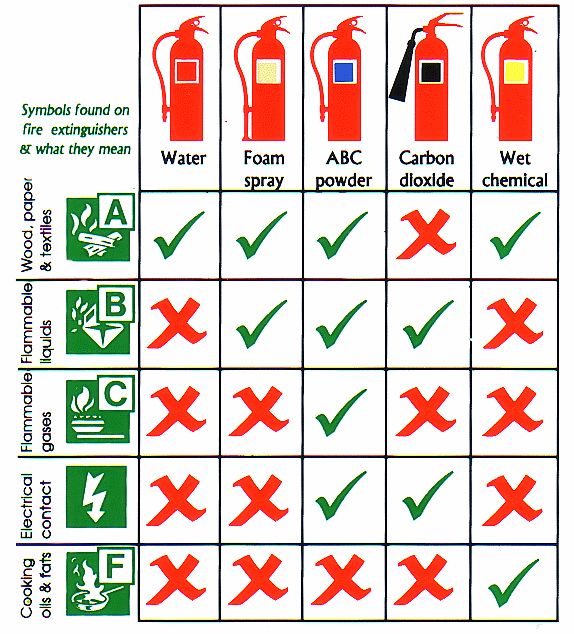class b fire is caused by
These include alcohols oil gasoline and paint. Theres less concern about cancer-causing particulatesalthough maintaining a safe distance and proper.

Types Of Fires Kidde Fire Safety
There are six different types of fire classes which are based on the energy source that has caused them.

. Class B Fires. Class B Fire Liquid fires. According to the US Fire Administration Class B fires involve ignitable liquids or gases like petroleum grease alcohol paint propane or gasoline.
Fire caused due to flammable gases such as butane methane propane etc. Flammable liquids such as alcohol ether oil gasoline and grease which are best extinguished by smothering. Flammable Liquids andor Gases The next fire type you need to be aware of is the ones started by flammable liquids.
Fire caused due to flammable liquids such as petrol diesel paint paraffin oils other than cooking oils etc. But this classification typically does not include fires involving cooking oils or grease. In the EuropeanAustralian system flammable liquids are designated Class B having flash point less than 100 C 212 F.
Class B fires involve flammable liquids and gases especially fuels like petroleum or petroleum-based products such as gasoline paint and kerosene. The fuel sources of class B fires gases and liquids can be quite volatile and cannot be extinguished by water which will only make the fuel source spread thus spreading the fire. Beyond knowing your fire hazard classification you also need to understand your area hazard classification.
Fire caused due to burning metals such as lithium sodium potassium magnesium titanium etc. Class A fires involve ordinary combustibles like paper and wood. The US system includes flammable gases in their Class B.
In addition to dry. These agents can cool Class A materials or inhibit the chemical chain reaction necessary to complete combustion. Examples of flammable liquids include petrol oil paraffin alcohol and certain paints.
Class D fires involving metals. Class A fires involving solid materials such as wood paper or textiles. So a class B fire is very dangerous as it is the burning of flammable liquids.
Thats the primary advantage of a Class B system. You should use Class C fire extinguishers or one classed for ABC or BC fires to put out an electrical fire. And most were caused by a firefighter doing something wrong.
A Class B system generates a much cleaner burn. Ordinary solid combustibles such as paper wood cloth and some plastics. Class C fires involving gases.
It is one of the five classes of fires along with A B D and K. A Class B fire is anything started by a flammable liquid such as petrol or alcohol. Class B fires involving flammable liquids such as petrol diesel or oils.
Class B fires involve flammable liquids like gasoline or cooking oil. A Class C fire is a fire that involves electrical equipment electrical appliances or electrical wiring. For instance a Class B extinguisher will work on fires caused by an explosive or flammable liquid like gasoline.
Other gases that are highly flammable are propane and butane which are common causes of Class B fires. Class C Fire Electrical fires. The only difference is the fuel.
These materials are typically found in. They can ignite by heating them up to extreme temperatures or with a simple spark. In order to have a fire you need fuel oxygen heat and a chemical reaction.
They are fires that starts in live electrical wires 4. Blanketing with O2-deprivation eg CO2 dry chemical or foam. That is why it is important only to use extinguishing agents and methods designed specifically for Class B fires.
Hope this helps Capt Lou GotFoam. Any of the following may be the fuel source for a Class B fire. Fire extinguishers are classified A ABC BC or K and loosely correspond to fire classifications.
This will spread the flames. Class B extinguishers come in the form of dry chemical CO2 etc. A good way to put out a Class A fire is to use a water based extinguisher.
If you want something for that B incident think about a county foam trailer with inductors and matching nozzles. A Class A fire is the most common kind of fire that is likely to start. There are four classes of fires.
Class B fires are those where the fuel is flammable or combustible liquid. The fuel for a Class B is a combustible gas or liquid. A fire caused by flammable or combustible liquids and gases oil gasoline.
This is suitable for grease gasoline or oil-based fire is usually filled with a dry chemical. Class B hazards include Flammable liquids greases and gas. The best solution to these fire hazards are dry chemical powder or clean agent gas.
They are caused by flammable and or combustible liquids such as kerosene gasoline benzene oil products alcohol and other hydrocarbon deviations. I dont recommend a dual tank setup. Electrical equipment appliances and wiring in which the use or a nonconductive extinguishing agent prevents injury.
Class B fire extinguishers are used to put out fires that have started from highly flammable liquids. Because a solid stream of water can cause the fuel to scatter. They are caused by energized electrical elements such as damaged power cors or overloaded electrical outlets.
2012 Farlex Inc. 2 Class A training systems burn wood products that result in thick smokesimilar to the real-life circumstances firefighters confront in structural fires. A carbon dioxide fire extinguisher rated for flammable liquids and gasses.
These liquids include any type of lacquer or oil-based paint products paint thinners and lacquer thinners oils and gasoline. They are normally caused by combustible solid objects like wood paper fabric and textiles. Like I said before a CAFd quality class A foam concentrate will extinguish a B type fire.

Fire Extinguisher Certificate Template Awesome Artist Resume Sample Sample New Art Certificate Samples Academic

Fire Extinguisher Types How To Choose The Right Class

Accounts Payable And Receivable Resume Best Of 10 Cover Letter For Accounts Payable Resume Skills Job Resume Resume Guide

Accounts Payable And Receivable Resume Best Of 10 Cover Letter For Accounts Payable Resume Skills Job Resume Resume Guide

Fire Fighting Rescue Truck China Firefighter Fire Protection Trucks

Fire Classes For Choosing The Proper Type Of Fire Extinguisher To Use Types Of Fire Class Fire

Which Fire Extinguisher Should I Use For Each Type Of Fire Infographicbee Com Types Of Fire Fire Extinguisher Training Extinguisher

Buckeye 2 5 Gallon Class K Wet Chemical Fire Extinguisher Rechargeable Untagged Ul Rating Fire Extinguisher Extinguisher Buckeye

Types Of Fire Extinguishers And What They Do Piper Fire Fire Safety Poster Fire Extinguisher Fire Prevention

Quick Fire Extinguisher Quiz Preppers Survive Fire Extinguisher Extinguisher Fire Extinguishers

Basic Fire Safety Pocket Guide Fire Safety Fire Extinguisher Types Fire Safety Poster

The Different Types Of Fires Classes Prevention Reaction

Different Kinds Of Fire Extinguishers Fire Extinguisher Fire Extinguisher Types Fire Safety Lessons

Classification Of Fire And Hazard Types As Per Nfpa Enggcyclopedia

Find Out What The Symbols On Your Fire Extinguisher Actually Mean Foremost Promotions

Different Kinds Of Fire Extinguishers Fire Extinguisher Fire Extinguisher Types Fire Safety Lessons

Classification Of Fire And Hazard Types As Per Nfpa Enggcyclopedia
